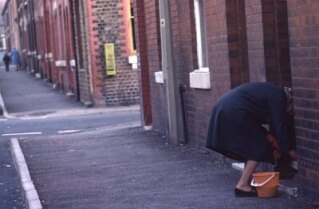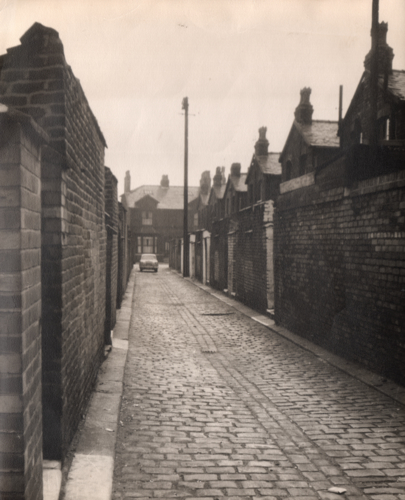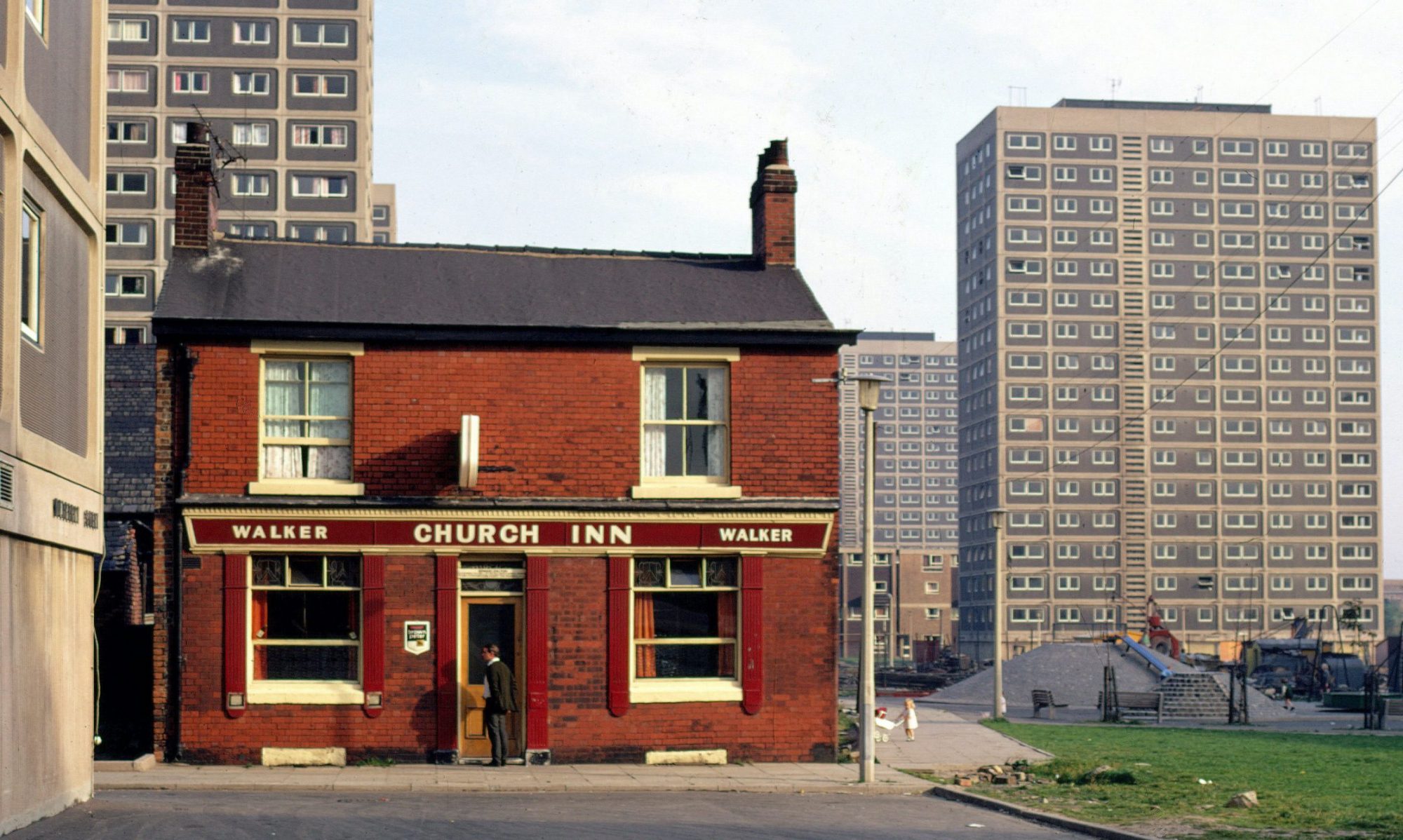We are fascinated by the lost tradition of ‘donkey stoning’ and want to find a donkey stone to exhibit in our final project exhibition in Spring 2024.
‘Donkey stoning’ was the process of applying a wetted ‘donkey stone’ to the surface of front door steps, window sills and flags to help clean and enhance their appearance. It was common practice in the 19th and 20th centuries and was a chore more often than not performed by women and children. The image, typically of a woman, ‘donkey stoning’ the doorstep of her terraced house is one which has cropped up regularly during our research for the Modern Backdrop project. There is a thought the practice originated in textile mills where they were used to provide a non-slip surface on greasy stone staircases.

Donkey stones were the size of a soap bar, made from a mixture of crushed sandstone, cement, bleach and pigment, although the exact make up could change depending on the manufacturer. People often got their donkey stones from the local Rag and Bone Man in exchange for old items. Donkey stones took their name from the image of a donkey used by the largest 19th century manufacturer, Edward Read & Son of Manchester. Eli Whalley and Co, based in Ashton-under-Lyne, are reported to have been the last manufacturer of donkey stones, until the company’s closure in 1979.

The practice of donkey stoning has faded into obscurity as a result of changes in cleaning methods and materials, and indeed the design and architecture of houses and doorsteps.
Do you have an old donkey stone lurking somewhere in your home? If so, we would love to hear from you so get in touch with us at themodernbackdrop@salford.ac.uk. We are also interested to hear from you if you have kept other remnants or relics from Salford’s now demolished terraces, whether that be a street sign, a tile, or coping stone. As always email us at the address above.


I used to donkey stone the front step (white stone) and the back yard step (brown stone). It involved stones from the rag and bone man, never the shop, a small bowl of water to damp the stone, them rub it on the steps. Always concentrated on getting a straight line between the step and the pavement. Used to offer service, for free, to other houses who had elderly people. Everyone wanted a smart step. People very proud of their space between the step and the pavement. It had to be kept clean.